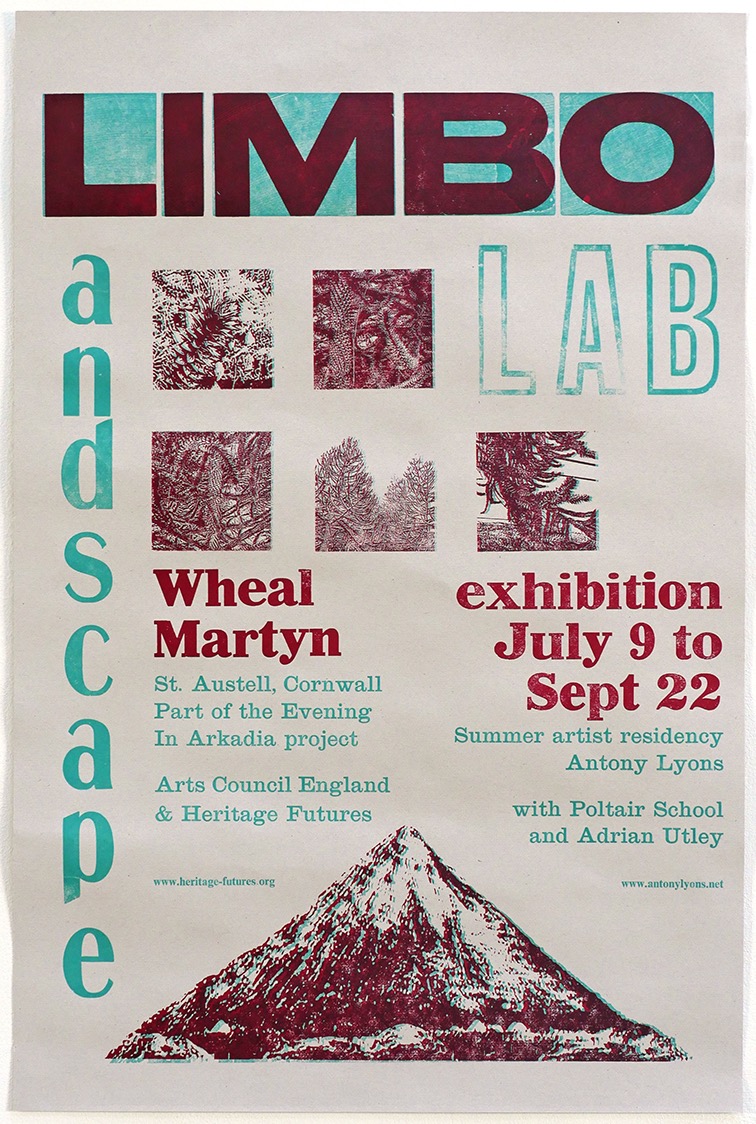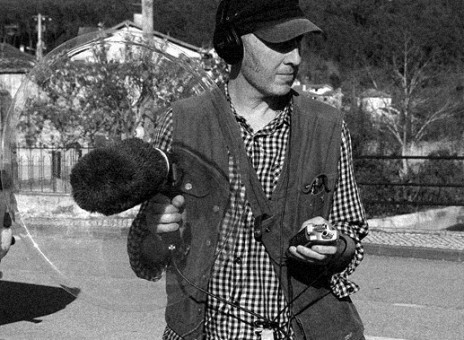LIMBO LANDSCAPE LAB @ Wheal Martyn
artist residency by Antony Lyons
EXHIBITION, JULY 9 – SEPT 22, 2018 (part of the Evening In Arkadia/Heritage Futures project)

Limbo Landscape Lab (part of the Evening In Arkadia project): During summer 2018, Wheal Martyn will be exhibiting works in the ‘Limbo Landscape Lab’, by artist-in-residence, Antony Lyons. These can be seen – and heard – in both indoor and outdoor spaces at the museum. As an environmental artist and creative researcher with the Heritage Futures project, Lyons offers imaginative reflections on the ‘in-between’ quality, and some long-durational changes – ecological and visual – in the clay-mining landscape where he has spent time fossicking[1] over the past two years. These changes are partly a result of planned restoration of former mining areas, but plant-life, water, weather, climate etc. have unpredictable and unmanageable ways of their own. Primarily using film and sound (video-sonics), Lyons explores some creative perspectives on agents of change – human and biophysical. As well as the museum, partners on the project include the China Clay History Society, the University of Exeter’s Environment and Sustainability Institute (ESI), degraded-lands restoration specialists Future Terrains, and the Heritage Futures project. Also taking part are a group of photography students from a local secondary school (Poltair, St Austell) and collaborating musicians.
Evening In Arkadia: Partly referencing an ancient pastoral utopian ideal and a theme in landscape painting, the creative land-based project Evening In Arkadia is currently grounded in three landscapes that are undergoing substantial transformation. For environmental artist, Lyons, the project title condenses themes of liminality, light & dark, decay/decline & ecological regeneration, recovery, cycles of time and deep-time. Taking the long-view.
All three landscapes are also study sites for the connected Heritage Futures research project (Transformation theme). One is a ‘rewilding’ area in Portugal; another is the ex-military site of Orford Ness on the Suffolk coast; the third is the clay-mining area in Cornwall. The wider context is that of a time of a shifting, fading – of certainties?, illusions?, hegemonies? – morphing into a new zeitgeist. In these limbo landscapes, how do we relate to place, to animals, to plants – in new ways? Globally, there are probings for radical realities of multi-species healing, communitas and consilience, rooted in dynamics of deep-time physical and ecological forces; and the vortex patterns of Sensitive Chaos[2].
Heritage Futures: What are the futures for heritage, landscape, legacies?…and who decides? Living with transformation in the claylands means living in the shadow of an extensive clay-mining operation, and with the associated massive reshaping of the land. It also means living with very fluid hopes and visions for the future. The mining, and post-mining, areas are a laboratory of constant change, undergoing a churn of simultaneous loss and creation. As with the other two Transformation landscapes in the Evening In Arkadia project, there are diverse, and sometimes oppositional, visions and plans. Tuning-in to geopoetic imaginings can play a part in the generation of shared futures; futures that are also entangled with the synthesis of natural and social forces of adaptation, migration, sustainability and control.
One of the features at the centre of local attention is the pyramid-like, 50m-high artificial mountain of waste known as the ‘Sky Tip’, prominent on the skyline of the town of St Austell. It holds a symbolic place in the maintenance of local identity, heritage and place-attachment. Its status as abandoned, edge-land wasteland will soon be shifting to a new scenario of becoming a visual and spatial centrepiece in a new eco-community development. Despite the mound’s continuing morphing and inevitable slow erosion, many continue to celebrate the landmark’s importance as a monument vital to the visual landscape character and sense of place. Using this feature as one backdrop and incorporating diverse influences (especially from the world of cinema), Lyons will use imagery, metaphor and speculation in responding to the clay-lands situation. As well as social and land-use change, the forces of water, weather and vegetative growth are influential in this landscape. Shining a light on discussions about vegetation and ecology, he dwells on the woven mesh of relationships between topics such as ‘rewilding’, ‘sanctuary’, ‘refuge’, ’invasive species’, ‘weeds’, ‘native’, and ‘non-native’.

In the diverse works assembled for the ‘Limbo Landscape Lab’, there is a juxtaposing of the surreal, the science-fiction, the overlooked, the hidden ‘under-stories’ and the ‘over-burdens’ of power dynamics. The progression of time and the dynamics of death, decay, growth and renewal are seen as being spiral, or vortex – not linear. With the intention of enhancing exchanges, and commonalities, with other ‘landscapes of transformation and exclusion’, there is a weaving of material that relates to, and derives from, the partner sites in the Heritage Futures project. The sonic sensibilities and participatory aspects of the project are augmented by contributions from collaborating musicians. The first such collaboration is with Adrian Utley (composer/guitarist with the band Portishead).
[1] `Fossicking` is a term found in Cornwall and Australia referring to prospecting. This can be for gold, precious stones, fossils, etc. by sifting through a prospective area. In Australian English, the term has an extended use meaning to `rummage`. The term has been argued to come from Cornish.
[2] Sensitive Chaos: Creation of Flowing Forms in Water and Air is an influential and imaginative book by Theodore Schwenk (1965, original German edition 1962).

